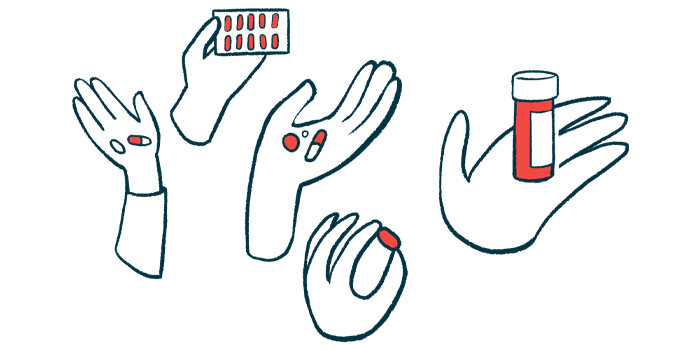Livmarli’s long-term benefits in Alagille extend beyond itch: Study
Up to 6 years of treatment prolonged survival, prevented clinical outcomes
Written by |

Up to six years of treatment with Livmarli (maralixibat), which is approved for reducing itch, or pruritus, in Alagille syndrome, prolonged survival and prevented clinically important liver outcomes relative to the disease’s natural course, according to a study comparing data from Livmarli’s clinical trials with those of the largest Alagille natural history database.
“These data are the first to demonstrate a [six]-year survival benefit in patients with [Alagille syndrome] using a pharmacologic interventional therapy, suggesting that [Livmarli] may delay or obviate the need for liver transplantation,” the researchers wrote.
“This seminal six-year analysis of [Livmarli] versus a comparable natural history control group demonstrates a 70% risk reduction for clinical outcomes in patients treated with Livmarli,” Binita M. Kamath, MD, the study’s senior author at The Hospital for Sick Children in Toronto, Canada, said in a press release from Mirum Pharmaceuticals, which markets Livmarli.
The researchers believe the findings “may lead to a paradigm shift in the potential treatment indications for [Livmarli] beyond pruritus control to a plausible treatment for cholestatic liver disease.” The study, “Event-free survival of maralixibat-treated patients with Alagille syndrome compared to a real-world cohort from GALA,” was published in Hepatology. It was supported by funding from Mirum.
Alagille syndrome is a genetic disease that results in a wide range of developmental problems, including fewer than normal bile ducts in the liver, which transport bile, a digestive fluid, from the liver to the intestines. Impaired bile flow, or cholestasis, causes bile to build up in the liver and leak into the bloodstream. This leads to liver damage and debilitating symptoms such as itching, which is believed related to excess bile acids in the bloodstream.
Livmarli’s other benefits explored
There are no approved therapies to slow the progression of the liver disease and many patients eventually require a liver transplant. Managing the disease relies largely on supportive care to minimize symptoms such as pruritus.
Livmarli is approved in the U.S. for treating pruritus in people with Alagille, ages 3 months and older. An oral solution, it blocks the ileal bile acid transporter (IBAT) protein, which is involved in transporting bile back to the liver to be reused. The medication causes more bile acids to be excreted in the stool rather than traveling to the liver and leaking into blood, thereby lowering their levels and easing itch.
The pivotal Phase 2 ICONIC clinical trial (NCT02160782) showed it was superior to a placebo at easing pruritus and reducing bile acids in the bloodstream.
The findings were consistent with data from two other placebo-controlled trials — ITCH (NCT02057692) and IMAGO (NCT01903460) — and the subsequent open-label extension studies IMAGINE (NCT02047318) and IMAGINE-II (NCT02117713).
No studies have evaluated whether long-term Livmarli treatment might benefit disease progression and survival, however, leading Kamath and her colleagues to investigate its long-term effects on clinical outcomes beyond pruritus.
Since the long-term extension studies didn’t include a placebo group for comparison, this question couldn’t be answered with Livmarli’s trial data alone so the researchers compared trial data from 84 children with Alagille who received the therapy for up to six years with those of a control group of 469 patients. The control group, matched for age, sex, and liver damage markers, received standard-of-care for managing cholestasis, but didn’t take Livmarli or any other IBAT suppressor.
The control patients were part of the Global Alagille Alliance (GALA) clinical database, the largest existing Alagille natural history study. It’s supported by the Alagille Syndrome Alliance, Mirum, Albireo Pharma (now part of Ipsen), and other educational grants to the Hospital for Sick Children.
Over six years, 21 Livmarli-treated patients (25%) had a clinically important liver outcome. This included a liver transplant (10 patients), surgery to redirect bile flow (SBD; four patients), high blood pressure in the main liver vein (portal hypertension; three), and death (four).
In the GALA group, 163 patients (34.8%) had an event, including 110 liver transplants, 33 SBDs, five with portal hypertension, and 15 deaths.
Nearly three-quarters of those on Livmarli (71.4%) lived without any of those clinical events for six years, compared with half in the control group.
In final analyses adjusted for age, sex, and liver biomarkers, Livmarli-treated patients were at a 70% lower risk of any of these clinical outcomes relative to the GALA group. Livmarli treatment was also associated with a 67% reduced risk of specifically liver transplant or death.
The researchers believe the findings may mean Livmarli has clinical benefits for Alagille patients beyond just itch control.
“We would like to thank the patients who participated in the Livmarli studies as well as the Alagille Syndrome Alliance for their continued partnership and dedication to advancing research in this rare liver disease,” said Pam Vig, PhD, Mirum’s chief scientific officer and head of research, and a study author.






